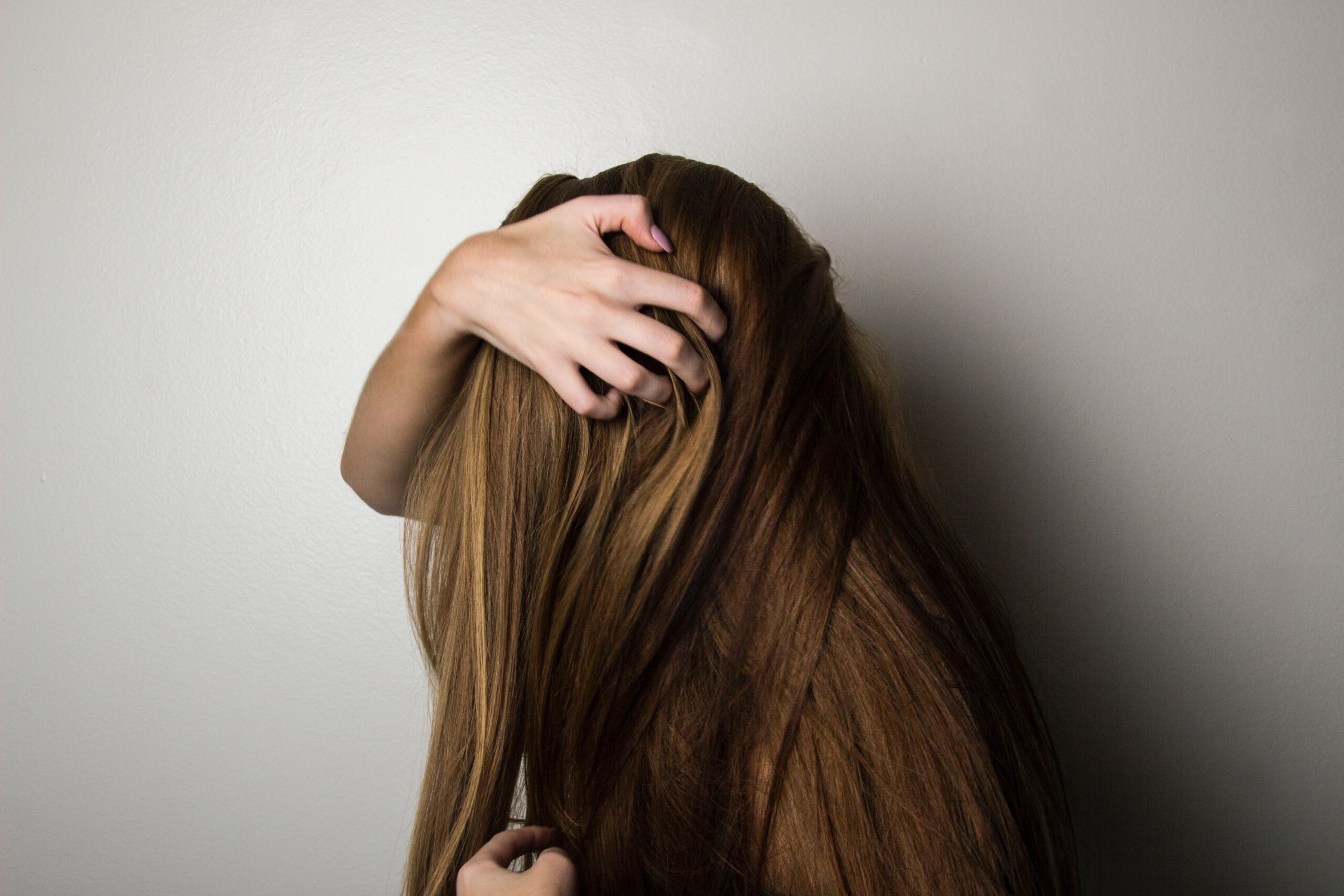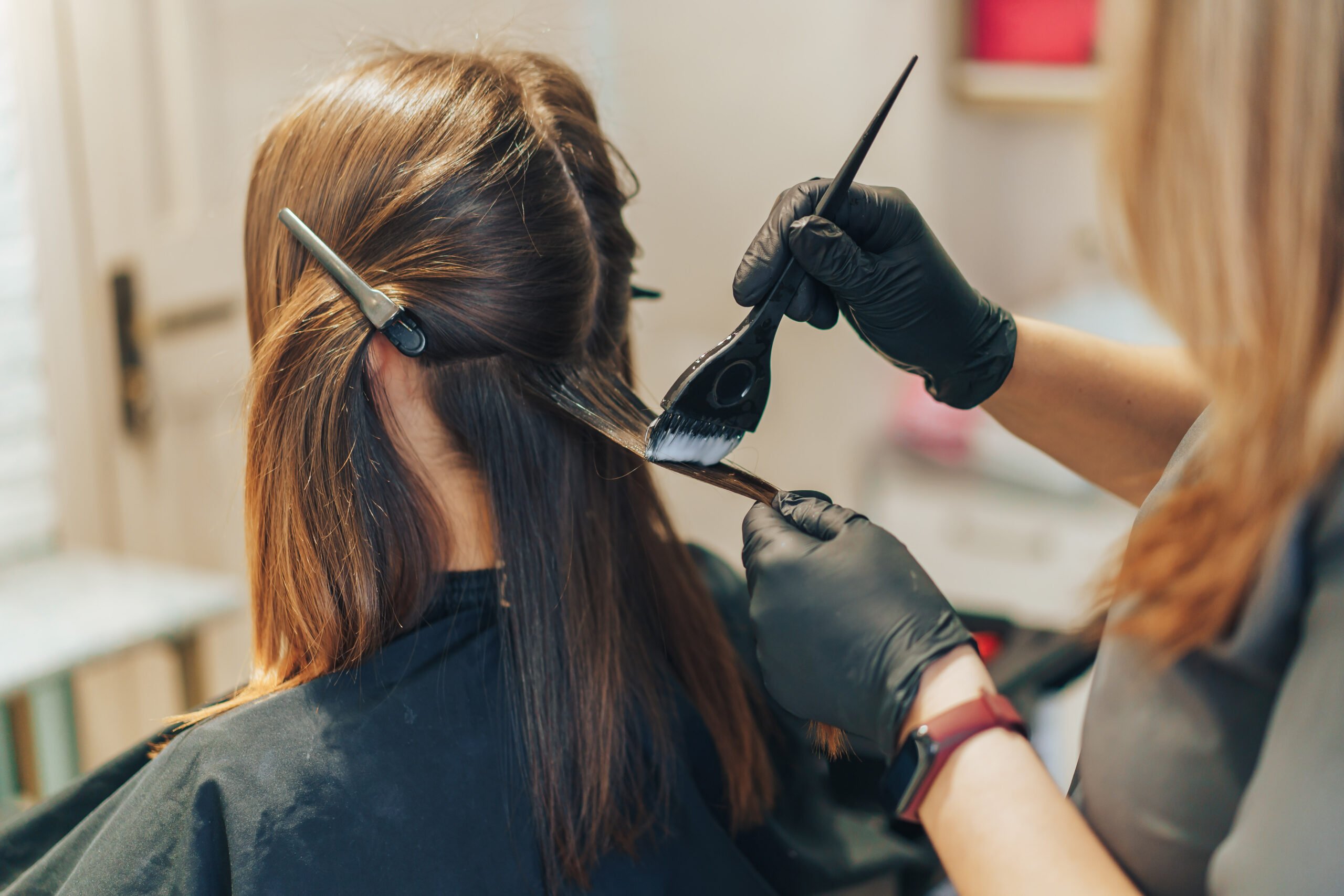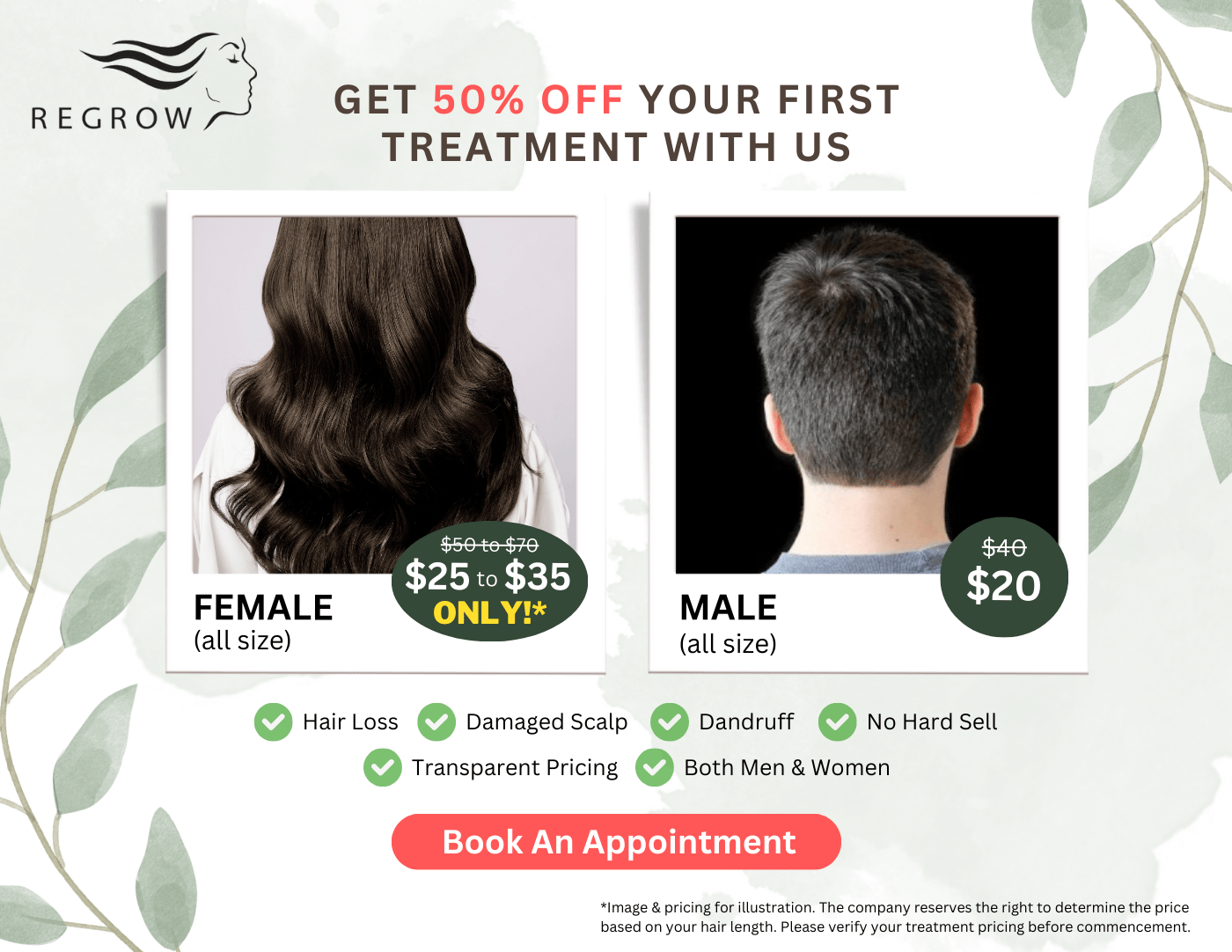Last Updated on: 7th August 2023, 10:31 am
In a world where personal expression often commences with appearance, hair color plays a significant role. It can be the difference between a silent nod of conformity and a rebellious shout of individuality. Yet, an increasingly conscientious consumer base is raising questions about the potential cost of this self-expression on their health, leading to the meteoric rise of herbal hair dyes. But do these natural alternatives truly measure up to their traditional counterparts? We’re here to give you a closer look.
Hair dye, in its most traditional form, is an alchemy of chemicals and compounds, expertly blended to give us that vibrant red, deep black, or even a whimsical unicorn mix. These synthetic dyes are time-tested, proven to deliver vibrant, long-lasting results that many users find indispensable.
However, as we’re growing more aware of the potential side effects that come with these potent chemicals, many have started to question if there might be a better way. Enter the era of herbal hair dyes: a gentler, more natural approach to hair coloring, which harks back to the roots of ancient traditions, when all hair treatments were sourced directly from Mother Nature.
Herbal hair dyes offer a compelling narrative, promising healthier hair, fewer side effects, and a nod to sustainability. But does the reality match the promises? And how do these dyes perform when pitted against the vibrant results of their synthetic counterparts?
In this piece, we’ll attempt to untangle the knotted strands of fact and fiction, bringing you a comprehensive comparison between traditional hair dye and its herbal alternative. So whether you’re a seasoned salon-goer or a hair-coloring novice, you’ll find everything you need to make an informed decision about your next hair adventure.
Chemical Composition: The Key Differences Between Traditional and Herbal Hair Dye
Traditional hair dyes are the standard bearers of the hair coloring world, consistently delivering the bold and dynamic colors that define hair trends across the globe. But the vivid hues they create are often the result of a complex concoction of chemicals, some of which have raised eyebrows among health-conscious consumers.
Primary among these is paraphenylenediamine (PPD), a substance used to create the darker shades found in many hair dyes. Known for its potential to trigger allergic reactions, PPD is just one among several synthetic ingredients commonly found in hair dyes, including ammonia, resorcinol, and peroxide. These chemicals are designed to pry open the hair cuticle, allowing the dye to penetrate the hair shaft and enact a dramatic color change. Yet, in the process, they can also lead to hair damage and scalp irritation.
Contrast this with the world of herbal hair dyes, where the ingredient list reads like a selection from a gardener’s handbook. Herbs like henna, indigo, and chamomile are common, often mixed with other plant-based ingredients to create a broad spectrum of natural hues. The herbal approach ditches harsh chemicals in favor of these botanical elements, which can both color and condition the hair.

The working principle behind herbal hair dyes is fundamentally different from traditional dyes. Instead of infiltrating the hair shaft, these dyes wrap around it, depositing color without significantly disrupting the hair’s structure. This gentle action helps to minimize damage and reduces the risk of scalp irritation, though it may not provide the same level of color vibrancy or longevity as traditional dyes.
In summary, the key differences in the chemical compositions of traditional and herbal hair dyes lie in their ingredients and their modus operandi. Traditional dyes utilize synthetic chemicals that deliver long-lasting and vibrant colors, but may compromise hair health. Herbal dyes, on the other hand, leverage natural ingredients to offer a gentler, albeit potentially less vivid, coloring process. Understanding these differences is a crucial step towards choosing the hair coloring path that best aligns with your personal needs and priorities.
The Effect on Hair Health: Herbal vs Traditional Hair Dye
Just as our bodies react to what we eat, our hair responds to the products we choose to apply. With hair dye, the impact can be significant, altering not just the color, but the very health of our tresses.
Traditional hair dyes, with their strong chemical formulations, are designed for dramatic color changes. To achieve this, they must penetrate the hair’s natural defenses. Ammonia, a common ingredient in these dyes, raises the hair cuticle, the hair’s protective outer layer, to allow color molecules to reach the inner cortex where the color change occurs. However, this process can also strip away natural oils, leaving hair dry and prone to breakage. Additionally, hydrogen peroxide, another frequent player in hair dye, is used to bleach out the natural color to make way for the new hue. This process further weakens the hair structure, leading to potential damage and hair weakening over time.
On the other side of the spectrum, herbal hair dyes present a far gentler approach to the coloring process. Typically free from ammonia and peroxide, they color the hair without dramatically altering its structure. Herbal hair dyes like henna, for instance, coat the hair shaft rather than penetrating it, creating a layer of color that also acts as a protective coating. This helps to increase shine and volume, creating a healthier look. Other natural ingredients often found in herbal hair dyes, such as aloe vera and chamomile, can offer conditioning benefits.
It’s worth noting, however, that the gentler approach of herbal hair dyes can come with a trade-off in terms of color vibrancy and longevity. And while they might be a healthier option overall, results can vary significantly depending on your hair type, color, and the specific product used.
In the debate between hair health and hair hue, traditional dyes and herbal alternatives each have their pros and cons. The former offers striking, long-lasting colors but may compromise the health of your hair, while the latter provides a more natural and gentle option with potential conditioning benefits, albeit with potentially less dramatic results. Ultimately, the best choice will depend on your individual hair goals and personal values.
Longevity and Maintenance: How Herbal and Traditional Hair Dyes Measure Up
When it comes to hair color, it’s not just about the hue on day one, but how it fares weeks or even months down the line. In this regard, the longevity and maintenance requirements of your chosen hair dye play a crucial role.
Traditional hair dyes, armed with their potent chemical arsenal, are famed for their longevity. Once the dye penetrates the hair shaft, it generally stays put until new hair grows in. This often translates into 4-6 weeks of color for semi-permanent dyes and up to several months for permanent ones, though the actual duration can vary based on factors such as hair type, color chosen, and aftercare routine.
The maintenance of traditionally dyed hair, however, can be a demanding affair. The chemicals used can leave hair dry and brittle, requiring a regimen of deep conditioning and potentially even protein treatments to restore hair health. Additionally, as the color starts to fade or grow out, touch-ups or recoloring sessions may be necessary to maintain a uniform look.
Herbal hair dyes, meanwhile, offer a different story. Given their natural ingredients and surface-level color application, they typically do not last as long as traditional dyes. It’s common for users to see noticeable fading within 2-4 weeks, depending on the specific product and color used. On the plus side, as herbal hair dyes fade, they often do so more subtly than their traditional counterparts, resulting in a more natural-looking grow-out phase.
In terms of maintenance, herbal dyes generally require less intensive care routines. Their gentler formula can even contribute to healthier hair over time, reducing the need for damage-control treatments. That being said, more frequent reapplications might be necessary to maintain the vibrancy of the color.
Regrow’s Herbal Hair Dye Colouring treatment uses only 100% natural ingredients. Through our experience and research, we have formulated a natural dye that lasts for a long time and does not fade. Embrace vibrant, long-lasting color that never fades with our exclusive 100% natural formula.
Conclusion: Weighing the Pros and Cons – Which is the Right Choice for You?
As we’ve explored, both traditional and herbal hair dyes come with their own unique set of advantages and drawbacks. Traditional dyes offer vivid, long-lasting colors and the ability to drastically alter your hair’s appearance, but they can also pose risks to hair health and require intensive maintenance. Herbal hair dyes, on the other hand, offer a more natural approach, gentler on your hair and potentially beneficial to its health, but they might not deliver the same vibrancy or longevity as their synthetic counterparts.
In weighing the pros and cons, it becomes evident that the best choice heavily depends on individual needs and preferences. If vibrant, long-lasting color and the ability to cover grays completely is a priority, traditional hair dye might be your best bet. However, if you value a more natural approach, prioritize hair health, or have sensitivities to certain chemicals, herbal hair dyes could be an ideal alternative.
As consumers, it’s important to remember that hair dye, like any personal care product, is not one-size-fits-all. Everyone has unique hair characteristics and personal preferences, and what works wonderfully for one person might not suit another. Your best bet? Understand your hair, know your options, and make informed decisions that align with your individual hair goals and personal values.
Frequently Asked Questions
1. Does herbal hair dye cover gray hair?
Yes, many herbal hair dyes can cover gray hair, although the results might not be as vivid or long-lasting as with traditional hair dyes. The effectiveness can also depend on the specific product and the shade of gray.
2. Can I switch from traditional to herbal hair dye easily?
Generally, you can switch from traditional to herbal hair dye without significant issues. However, it’s important to note that the existing chemical dye might affect the results of the herbal dye. Always perform a strand test first to see the results.
3. Is herbal hair dye safe for all hair types?
While herbal hair dyes are generally gentler than traditional dyes, they may not be suitable for everyone. Certain ingredients could cause allergic reactions in some people. Always do a patch test before full application.
4. Can traditional hair dye cause hair loss?
Excessive or improper use of traditional hair dye can lead to hair damage and potentially cause breakage, but it’s not a direct cause of hair loss from the roots. If you experience significant hair loss after dyeing, it’s advisable to consult with a healthcare professional.
5. How long does herbal hair dye last?
The longevity of herbal hair dye can vary, but typically you can expect the color to start fading after 2-4 weeks, depending on the specific product and color used.
6. Does traditional hair dye damage hair permanently?
Overuse of traditional hair dye can lead to cumulative damage, but it’s not typically permanent. Proper hair care routines, including deep conditioning and protein treatments, can help restore hair health over time.
7. Are there vibrant color options in herbal hair dye?
Herbal hair dyes offer a range of color options, but they may not be as vibrant or wide-ranging as traditional dyes. Herbal dyes tend to produce more natural-looking hues.
8. How often should I reapply herbal hair dye?
The frequency of reapplication depends on the longevity of the dye, your hair growth rate, and your personal preference for color vibrancy. Typically, you might find yourself reapplying every 2-4 weeks.
10. Can I color my hair with herbal dye after chemical treatment?
You can generally use herbal dye after a chemical treatment like perming or straightening, but it’s essential to wait a sufficient period (typically 1-2 weeks) to prevent over-stressing the hair. As always, strand and patch tests are recommended before full application.







